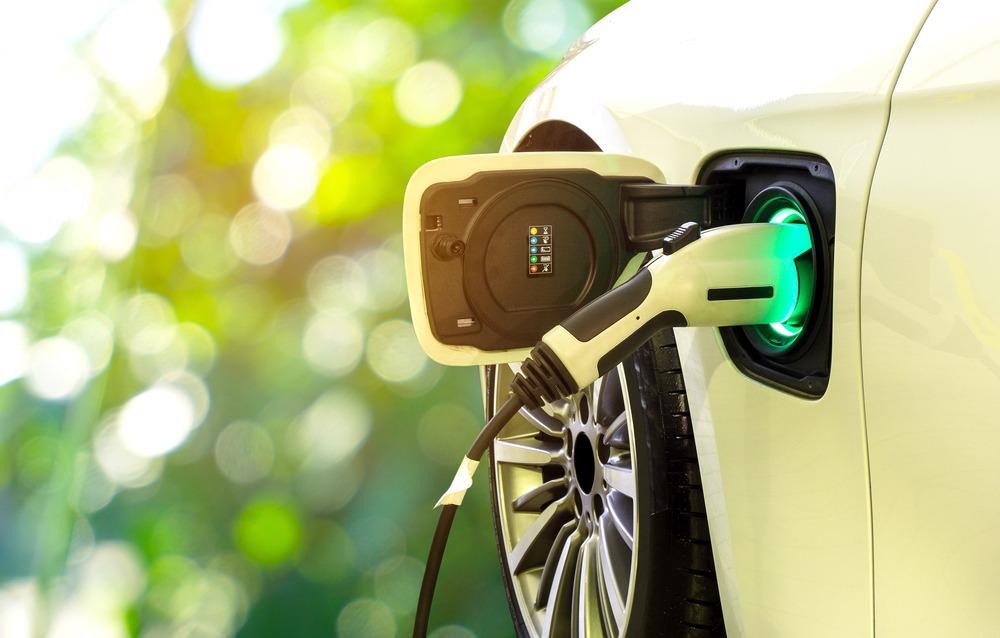The article is written by Riya Veluri, an editorial team member of Industrial Lubricants. After her graduation, Riya works as a website developer & SEO specialist in Lubrication & Tribology Industry & writes technical articles on Lubricants, Lubrication, Reliability & sustainability.
Electric Vehicle Lubricants
Table of Contents
Electric vehicles (EVs) are becoming increasingly popular as the technology improves, and the need for more sustainable transportation options grows. One of the key components of an EV is its lubrication system, which helps to keep the various moving parts of the vehicle running smoothly and efficiently. This article will discuss the importance of electric vehicle lubricants and the lubrication process.
Figure 1. How an Electric Car works?
Why is a Proper Lubrication System required in EVs?
The lubrication system in an EV is responsible for reducing friction and wear on the vehicle’s moving parts, such as the gears, bearings, and electric motor. This helps to increase the efficiency of the vehicle, as well as prolong its lifespan. The lubricant used in an EV is specially formulated to meet the unique demands of the electric drivetrain.
Also, one of the main reasons for proper lubrication systems in Electric vehicles is the differences between traditional internal combustion engine (ICE) lubricants and EV lubricants. EV lubricants are designed to withstand higher temperatures. This is because the electric motor in an EV generates more heat than an ICE, which can cause the lubricant to break down more quickly. EV lubricants are also formulated to be more thermally stable, which means they can maintain their viscosity (thickness) at high temperatures.
Another important aspect of EV lubricants is their ability to handle high loads. The electric motor in an EV generates a high amount of torque, which can cause a lot of stress on the gears and bearings. EV lubricants are formulated to handle these high loads and provide excellent wear protection for the vehicle’s moving parts.
The lubrication process for an EV is not like the ICE engines, and there are some key differences. One of the main differences is that the lubricant used in an EV is typically not changed as often as in an ICE. This is because EV lubricants are designed to last longer and have a higher resistance to thermal breakdown.
Another important aspect of the lubrication process for an EV is that the lubricant is typically applied directly to the moving parts rather than being mixed with the fuel as it is in an ICE. This helps ensure that the lubricant is distributed evenly and that all the moving parts are properly lubricated.
So, we have already understood that electric vehicle lubricants and the lubrication process play a crucial role in the performance and longevity of an electric vehicle. EV lubricants are specially formulated to withstand the unique demands of the electric drivetrain, including high temperatures and loads. With the increasing popularity of EVs, it is important to understand the importance of proper lubrication in these vehicles and the use of high-quality EV lubricants to ensure optimal performance and longevity.
EV Lubricants Formulations
EV lubricants are typically formulated with synthetic base oils, such as polyalphaolefins (PAOs) or esters. These base oils have higher thermal and oxidative stability than traditional mineral oil-based lubricants, making them better suited for the high temperatures and loads in EV drivetrains. Additionally, synthetic lubricants typically have a higher viscosity index (VI), meaning they can maintain a consistent viscosity over a wide range of temperatures. This is important for EV lubricants, as the temperatures in the drivetrain can vary greatly depending on factors such as the ambient temperature, the speed and load of the vehicle, and the battery’s charging state.
Figure 2. Electric Vehicle (EV) fluids.
Lubricants Compatibility
Another important factor to consider when choosing an EV lubricant is its compatibility with the materials used in the drivetrain. Many EV drivetrains use materials such as aluminium and copper in their construction, which can be susceptible to corrosion and wear when in contact with certain types of lubricants. It is important to choose a lubricant that is compatible with these materials and will not cause any damage over time.
Points to be kept in mind before choosing EV Lubricants
- Proper lubrication and lubricants are also important for the battery’s longevity in an EV. The battery in an EV is a complex system with many moving parts, such as the cooling system and the contactors. These parts must be lubricated to function correctly and prolong the battery’s life. Therefore, it is important to use a high-quality lubricant designed for EV batteries.
- In addition to the lubrication of the drivetrain and battery, it is also important to regularly check and maintain the lubrication levels of other parts of the EV, such as the brakes, suspension, and steering system. These systems also rely on proper lubrication to function correctly and prolong the vehicle’s life.
- EV owners must work with qualified technicians and use recommended lubricants to ensure their vehicle’s performance and longevity.
- The concept of extended drain intervals is another important aspect to consider when discussing electric vehicle lubrication. Extended drain intervals refer to the ability of a lubricant to maintain its performance and protection properties for a longer period before needing to be changed. This can greatly reduce the maintenance costs associated with electric vehicles and the environmental impact of disposing of used lubricants.
- EV lubricants formulated with synthetic base oils tend to have better thermal and oxidative stability, allowing them to maintain their performance and protection properties for longer periods. Additionally, many EV lubricants are formulated with advanced additive packages that can help extend the lubricant’s life. This can be beneficial for EV owners, as it means they do not have to replace the lubricant as often, and it can help to reduce the overall maintenance costs associated with the vehicle.
- It is also important to note that using recycled or repurposed lubricants is not recommended for electric vehicles. These lubricants may not have the same performance and protection properties as new lubricants and may not be compatible with the materials used in the drivetrain. It is best to use new, high-quality lubricants that are specifically formulated for use in electric vehicles.
- Moreover, it’s important to note that the application of lubricant is also a critical factor that can affect the performance and longevity of the electric vehicle. Incorrect application of lubricant can lead to poor lubrication and can cause damage to the drivetrain and other parts of the vehicle.

Figure 3. Electric Vehicle (EV) components’ disposition.
Importance of Lubricant Monitoring of an EV
Another important consideration when discussing electric vehicle lubrication is lubricant monitoring. Lubricant monitoring periodically analyses the lubricant to determine its condition and identify potential issues. This can be done through various methods such as oil analysis, infrared spectroscopy, and tribology analysis.
Oil analysis is a common method of lubricant monitoring; it involves taking a sample of the lubricant and analysing it for various properties such as viscosity, acidity, and metal content. Infrared spectroscopy is another method of monitoring lubricant; it analyses the lubricant by measuring the infrared light absorbed by the lubricant.
Tribology analysis is another method of monitoring lubricant; it involves measuring the lubricant’s friction, wear, and lubrication properties.
Lubricant monitoring can be extremely beneficial for EV owners, as it can help to identify potential issues with the lubricant before they become serious problems. For example, if a lubricant sample shows high levels of metal content, it could indicate wear on the gears or bearings in the drivetrain. This information can be used to take appropriate action to address the issue before it causes significant damage to the vehicle.
In addition, lubricant monitoring can help extend the lubricant’s life. By regularly monitoring the lubricant, EV owners can determine when it is time to change it rather than relying on a fixed schedule. This can help to reduce the overall maintenance costs associated with the vehicle and helps to ensure that the lubricant is always in good condition.
Finally, it is important to note that lubricant monitoring is not just for EV owners but also for manufacturers and lubrication service providers. Lubricant manufacturers can use lubricant monitoring data to improve their products and ensure that they meet the needs of EV owners. Lubrication service providers can use lubricant monitoring data to improve their services and ensure they provide the best possible lubrication for their clients.

Figure 4. EV lubricant.
Conclusions
In conclusion, Electric vehicle lubrication is a crucial aspect of the performance and longevity of these vehicles. Properly formulated EV lubricants can help reduce friction and wear on the moving parts of the vehicle, increase efficiency, and prolong the vehicle’s life. Additionally, extended drain intervals and proper lubricant application can help reduce the overall maintenance costs and environmental impact of electric vehicles. EV owners need to work with qualified technicians and use recommended lubricants to ensure optimal performance and longevity of their vehicles.
Lubricant monitoring is an important aspect of electric vehicle lubrication. By regularly analysing the lubricant, EV owners can identify potential issues with the lubricant and take appropriate action to address them before they become serious problems. Lubricant monitoring can also help extend the lubricant’s life and reduce the overall maintenance costs associated with the vehicle. Lubricant monitoring is not only for EV owners but also for manufacturers and lubrication service providers to improve their products and services.
Leave a Reply
You must be logged in to post a comment.



Dear Riya,
Thanks for writing such a nice write up. It would be great if you could give a comparison of the performance of a PAO based EV fluid and ester based EV fluid. It would be great if you could give the cost estimate of each kind of EV fluid. Regards
Hyundai/Kia made a unique design mistake in their EV gear reducers used in the Soul 64kWh, all Ioniq 28 and 38kWH, and all gen-1 Niro and Kona.
The non-serviceable particle magnet was not properly restrained from moving around in the turbulent oil flow and as a result captures, wears down, then eventually releases wear particles once they lose their magnetic attraction from working and heating.
During the break-in stage when particle generation is highest, the oil blackens and evidently those free particles are damaging the ball bearings. This leads to eventual problems in perhaps 1% by my estimation, known by owners as the “wheel of fortune” noise.
The lesson here is to ensure designed particle sequestration methods actually work. This problem is no longer present in the company’s later EVs.